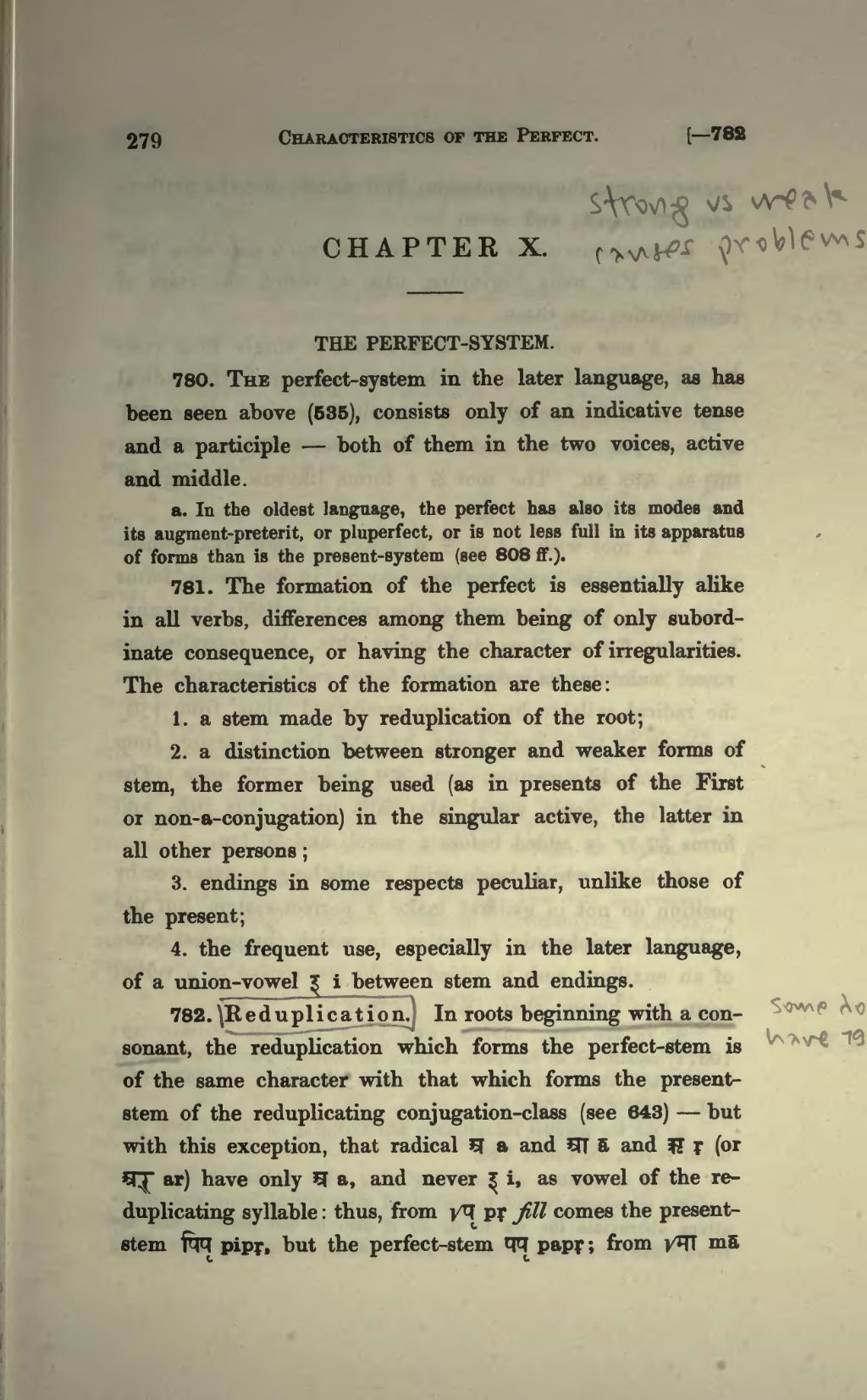CHAPTER X.
THE PERFECT-SYSTEM.
780. The perfect-system in the later language, as has been seen above (535), consists only of an indicative tense and a participle — both of them in the two voices, active and middle.
a. In the oldest language, the perfect has also its modes and its augment-preterit, or pluperfect, or is not less full in its apparatus of forms than is the present-system (see 808 ff.).
781. The formation of the perfect is essentially alike in all verbs, differences among them being of only subordinate consequence, or having the character of irregularities. The characteristics of the formation are these:
1. a stem made by reduplication of the root;
2. a distinction between stronger and weaker forms of stem, the former being used (as in presents of the First or non-a-conjugation) in the singular active, the latter in all other persons;
3. endings in some respects peculiar, unlike those of the present;
4. the frequent use, especially in the later language, of a union-vowel इ i between stem and endings.
782. Reduplication. In roots beginning with a consonant, the reduplication which forms the perfect-stem is of the same character with that which forms the present-stem of the reduplicating conjugation-class (see 643) — but with this exception, that radical अ a and आ ā and ऋ ṛ (or अर् ar) have only अ a, and never इ i, as vowel of the reduplicating syllable: thus, from √पृ pṛ fill comes the present-stem पिपृ pipṛ, but the perfect-stem पपृ papṛ; from √मा mā
